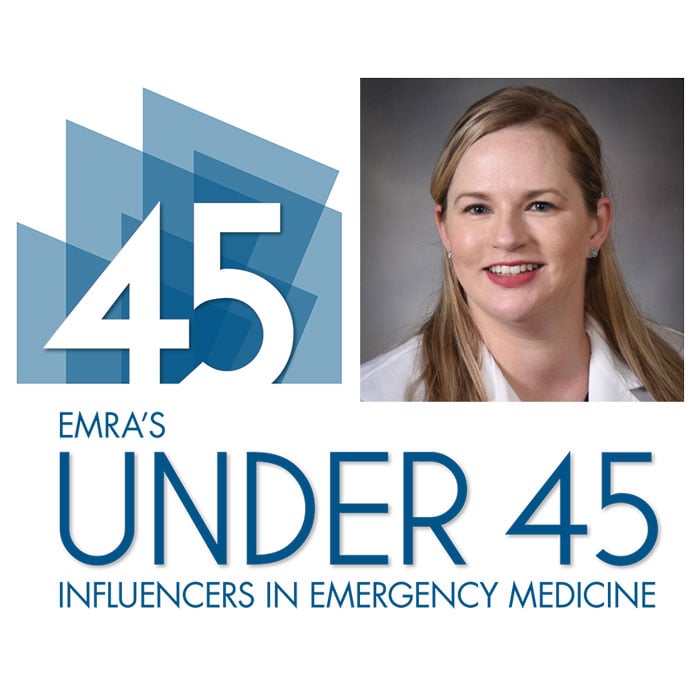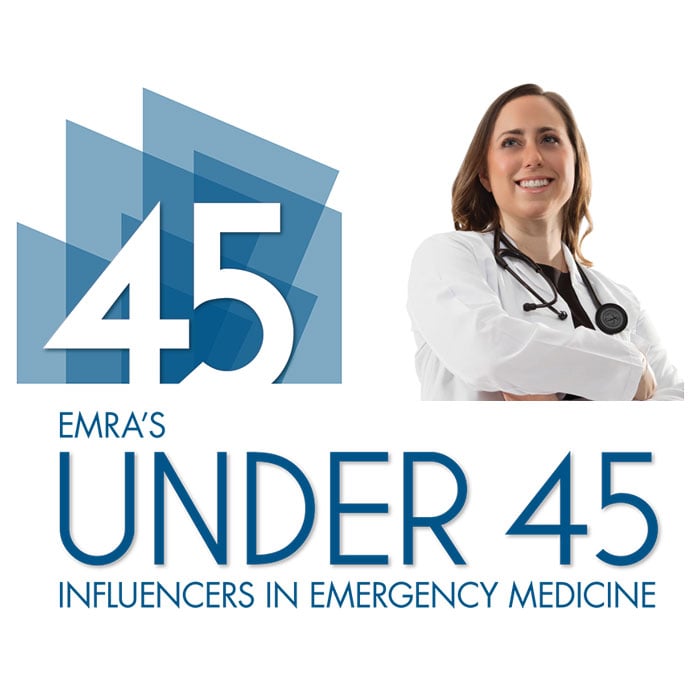Expanding Pain Management: The Role of Regional Anesthesia in Emergency Medicine
Eli Brennan MS3, NREMT-B/FF
University of Massachusetts Medical School
EMRA MSC Mid-Atlantic Representative
Effective pain management is a cornerstone of quality care in the emergency department (ED), where physicians operate on the frontline of managing acute and often severe pain from trauma, fractures, and various other conditions. Traditionally, opioids and has been the mainstays of ED analgesia for severe pain. However, with the rise of the opioid epidemic, physicians have become increasingly, and appropriately, reluctant to use them for every patient. In many institutions, there has been an emerging landscape of pain management centered around regional anesthesia.
Peripheral nerve blocks, once almost exclusively performed in the operating room by anesthesiologists, are gaining interest in emergency medicine as viable, non-opioid options for rapid and effective pain control.1,2
The Prevalence of Nerve Blocks in the ED
In the United States, peripheral nerve blocks are not yet standard practice across all EDs. Their use is more prevalent in larger academic centers or Level I trauma hospitals, where emergency physicians can work closely with anesthesiologists to develop proficiency in these techniques.2,4 Studies indicate that certain nerve blocks can be performed safely and effectively by trained EM physicians, although the adoption remains inconsistent across different types of hospitals.5
Community hospitals and rural EDs are less likely to perform nerve blocks routinely,1 primarily due to limited training and access to equipment. Additionally, some institutions prefer nerve blocks to be administered by anesthesiologists, especially for complex cases. However, where there is support for EM providers to perform nerve blocks, they offer an excellent option for opioid-sparing pain management, a significant advantage in the current context of the opioid crisis.
Training in Emergency Medicine Residency Programs
Emergency medicine residency programs in the U.S. vary in the extent to which they include training in nerve blocks and other forms of regional anesthesia. Some residencies offer dedicated modules in ultrasound-guided procedures, including nerve blocks, but this is not universally mandated.6 Surveys indicate that most EM residencies incorporate some form of ultrasound-guided regional anesthesia (UGRA) training, however the duration and depth of this training widely varies,6 with programs offering anything from several weeks to several months of dedicated UGRA. While leaders in the field support this training, adoption has been difficult due the constraints of fitting an ever-increasing base of medical training into three or four years of residency.
However, for EM providers seeking advanced nerve block proficiency, additional elective rotations in anesthesiology or dedicated regional anesthesia workshops are often necessary. These can be challenging to fit into the demands of residency. One option available to those interested is doing an ultrasound fellowship and leveraging this training to focus on UGRA.
Commonly Performed Nerve Blocks
The types of nerve blocks commonly performed in the ED typically focus on major limb injuries or trauma cases that benefit from localized, prolonged pain control. These include:
- Femoral Nerve Block: Often used for femoral fractures, which are common in elderly patients or trauma cases
- Interscalene and Supraclavicular Blocks: Useful for shoulder dislocations or upper limb fractures
- Wrist and Ankle Blocks: Can provide targeted anesthesia for injuries to the extremities, such as fractures of the hand, wrist, or ankle
These procedures are primarily ultrasound-guided, as ultrasound enhances both the accuracy and safety of nerve block placement.3
Barriers to Implementing Regional Anesthesia in the ED
Several factors limit the widespread adoption of nerve blocks in EDs:
- Training Limitations: The steep learning curve for ultrasound-guided nerve blocks can be challenging, particularly in EDs with high patient turnover and limited time for training
- Equipment Availability: Not all EDs have access to high-quality ultrasound machines, especially in smaller or rural hospitals
- Institutional Policies and Collaboration: In some institutions, anesthesiology departments may prefer to retain nerve block procedures within their specialty. Support from both hospital administration and anesthesiology is essential for integrating these techniques into ED practice.
Addressing these barriers will be crucial in expanding the role of regional anesthesia in emergency care. Standardized training programs, interdisciplinary collaboration, and investment in ultrasound technology could enable more EDs to adopt these effective pain management tools.
Conclusion
As the emergency medicine field continues to innovate and adopt advanced pain management techniques, peripheral nerve blocks and other forms of regional anesthesia offer promising alternatives to opioid-based pain relief. While these techniques are not yet universally adopted in U.S. emergency departments, they are becoming increasingly common in academic centers and trauma hospitals, where EM providers are trained in ultrasound-guided procedures.
Expanding training opportunities, fostering collaboration with anesthesiology departments, and addressing institutional barriers will be essential to making nerve blocks a routine part of emergency care. By learning from the success of those that have successfully adopted this, EM programs should further integrate anesthetic pain management into emergency medicine, benefiting patient outcomes and improving overall pain management in the ED.
As a medical student interested in emergency medicine, special attention should be paid towards a residency program’s curriculum for regional anesthesia when choosing programs of interest to apply to. Similarly, residents should consider a hospital system’s attitudes towards the use of regional anesthesia when weighing prospective job offers.
References
- Wolmarans, M., & Albrecht, E. (2023). Regional anesthesia in the emergency department outside the operating theatre. Current Opinion in Anaesthesiology, 36, 447 - 451. https://doi.org/10.1097/ACO.0000000000001281.
- Buck, F., Devroe, S., Missant, C., & Velde, M. (2012). Regional anesthesia outside the operating room: indications and techniques. Current Opinion in Anaesthesiology, 25, 501–507. https://doi.org/10.1097/ACO.0b013e3283556f58.
- Herring, A. (2017). Local and Regional Anesthesia in the Emergency Room, 359-367. https://doi.org/10.1007/978-3-319-49386-2_22.
- Faddoul, A., & Bonnet, F. (2020). Is there a place for regional anesthesia in nonoperating room anesthesia? Current Opinion in Anaesthesiology. https://doi.org/10.1097/ACO.0000000000000897.
- Choi, J., Lin, E., & Gadsden, J. (2013). Regional anesthesia for trauma outside the operating theatre. Current Opinion in Anaesthesiology, 26, 495–500. https://doi.org/10.1097/ACO.0b013e3283625ce3.
- Wilson, C., Chung, K., & Fong, T. (2017). Challenges and Variations in Emergency Medicine Residency Training of Ultrasound‐guided Regional Anesthesia Techniques. AEM Education and Training, 1, 158 - 164. https://doi.org/10.1002/aet2.10014
Related Content

Aug 31, 2019
Nicole Battaglioli, MD, FAWM
As outgoing ALiEM Wellness Think Tank COO, Nicole Battaglioli has devoted considerable time and brainpower to defining and improving resident wellness. Along with being an Assistant Professor of Emergency Medicine, Dr. Battaglioli is the CEO/founder of Komorebi Coaching, lover of wilderness medicine, and promoter of super-sheroes.






